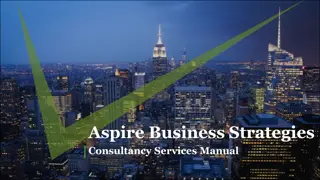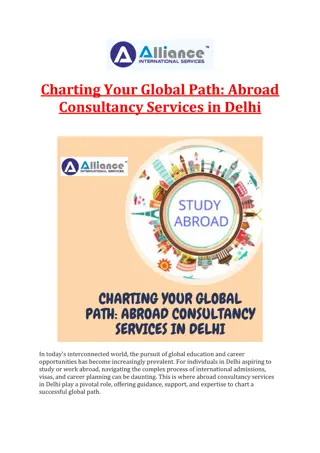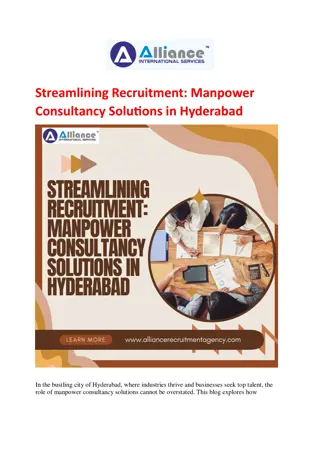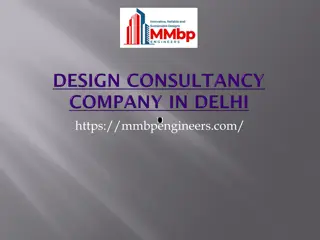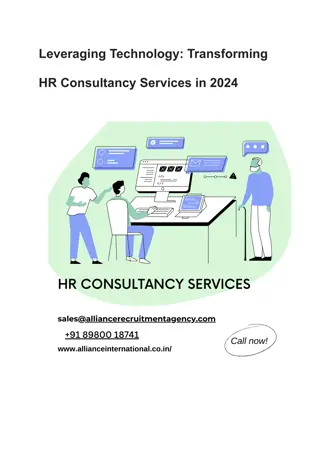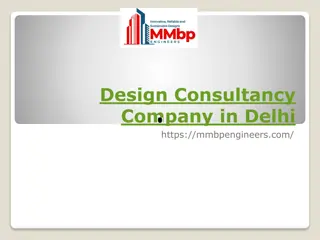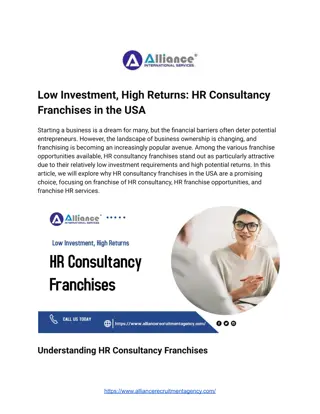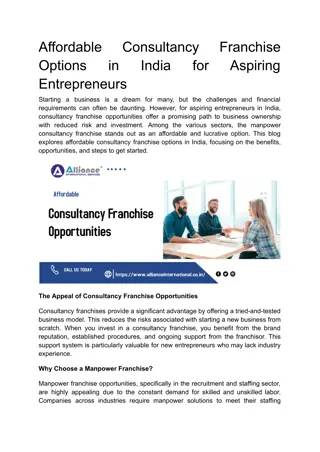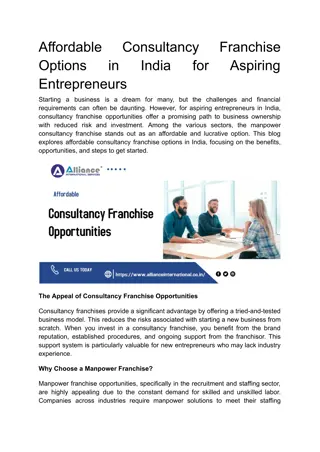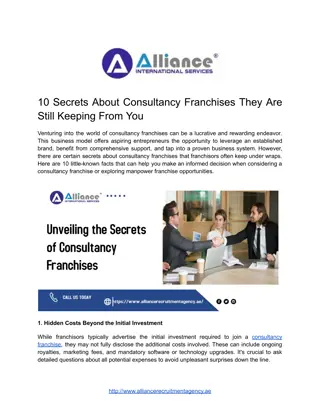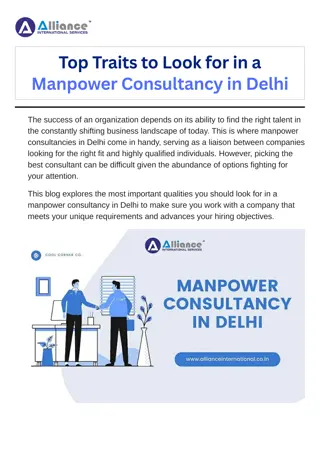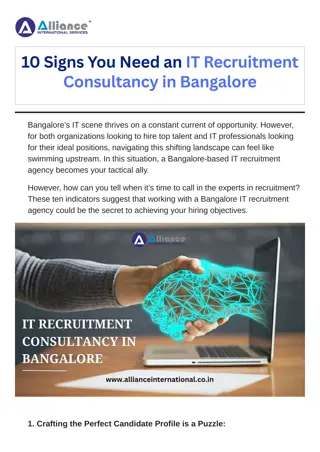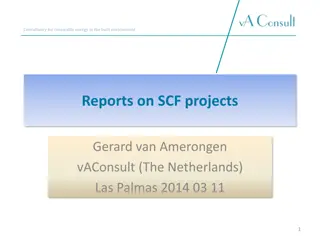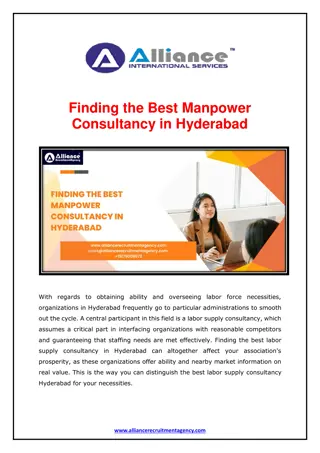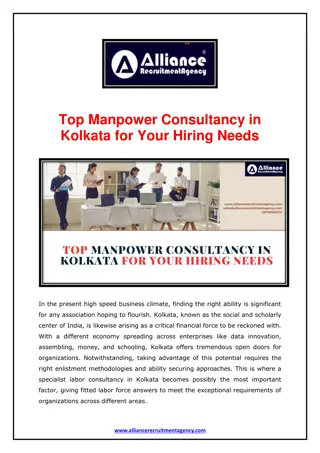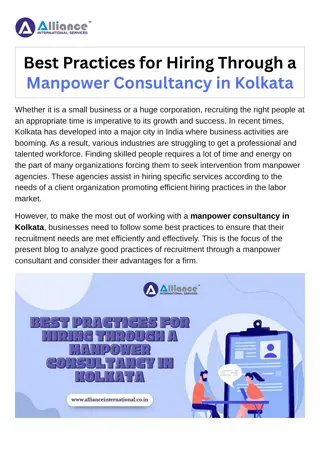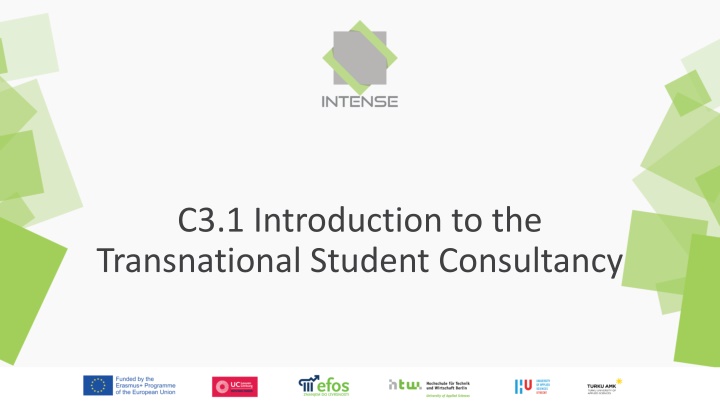
Exploring the Internationalisation of SMEs Through Transnational Student Consultancy
"Discover the innovative approach of the INTENSE Teaching Program focusing on SME internationalisation and students as consultants. Explore real-world examples, challenges, and learning resources for a global perspective."
Uploaded on | 0 Views
Download Presentation

Please find below an Image/Link to download the presentation.
The content on the website is provided AS IS for your information and personal use only. It may not be sold, licensed, or shared on other websites without obtaining consent from the author. If you encounter any issues during the download, it is possible that the publisher has removed the file from their server.
You are allowed to download the files provided on this website for personal or commercial use, subject to the condition that they are used lawfully. All files are the property of their respective owners.
The content on the website is provided AS IS for your information and personal use only. It may not be sold, licensed, or shared on other websites without obtaining consent from the author.
E N D
Presentation Transcript
C3.1 Introduction to the Transnational Student Consultancy
Agenda 1. The INTENSE Teaching Approach 2. Course Content and Organisation 3. Students as Consultants
Are you ready to go global? What do you know about SME internationalisation? Why and how do companies internationalise? Which challenges do SMEs face when going global?
2 Examples of How to Go Global Video Soulbottles: https://mediathek.htw- berlin.de/getMedium/Default/2a 87a2a658ad25540b6c6bbdf43f83 dd.mp4 Source: HTW Berlin (2017): Internationalisation of Soulbottles. URL: https://mediathek.htw- berlin.de/getMedium/Default/2a87a2a658ad25540b6c6bbdf43f83dd. mp4 [04.20.2018]. Source: Youtube (2013): The Globalization of Starbucks, published on 14.12.2013. URL: https://youtu.be/c-KKy-03O5A [04.20.2018].
What is this course about? Internationalisation of SMEs Consulting Experience
The INTENSE Teaching Approach Globalisation changed the constraints of work and learning HEI must adapt in order to equip students for the new reality - Entrepreneurial Universities
Transnational Student Consultancy Source: Lehmann, Saulich, Wohlgemuth (2018)
Outputs of the Consulting Project Final presentation (company) Consulting report (company) Teaching case study (future business students) (http://intense.efos.hr/)
References on INTENSE H nti, Sirpa; Kairisto-Mertanen, Liisa & Rantanen, Helena (2018): Learning Innovation Competencesand International Entrepreneurship. Paper presented at the ISPIM Innovation Conference Innovation, The Name of The Game. Stockholm, 17-20 June 2018. https://search.proquest.com/openview/42c03db55cb07181e080c0db7ab9362c/1?cbl=2040562&pq-origsite=gscholar. Huion, Patricia (2018): INTENSE: An Erasmus+ project using EntreComp to map and assess good practices, and for assessement. In: European Commission (Ed.): EntreComp into Action. Get Inspired, Make it Happen. A user guide to the European Entrepreneurship Competence Framework. Luxembourg, p. 100. Jokiniemi, Sini (2017): INTENSE Entering New Markets Successfully. Journal of Excellence in Sales 2017(2). URL: https://issuu.com/turunamk/docs/journal_of_excellence_in_sales_2_20 [22.08.2019], pp. 19-21. Lehmann, Tine; Saulich, Christina & Wohlgemuth, Veit (2018): Transnational Student Consultancy an Integrated Approach to Business Students Learning. Domenech, Josep et al. (Hrsg.): Conference Proceedings of the 4th International Conference on Higher Education Advances (Head 18). Valencia: Universitat Polit cnica de Val ncia, pp. 303-311. Rantanen, Helena (2018): INTENSEPilot Run: Positive Experiencesin Internationalization. Journal of Excellence in Sales 2018(1). URL: https://issuu.com/turunamk/docs/journal_of_excellence_in_sales_1_20_dab0654f76d63e [22.08.2018]. Saulich, Christina, Wohlgemuth, Veit & Lehmann, Tine (2017): Fit for Internationalization. In: Hochschule f r Technik und Wirtschaft (Hrsg.): Industrie von Morgen. Beitr ge und Positionen 2017. Berlin: Berliner Wissenschaftsverlag, pp. 90-95. Saulich, Christina & Lehmann, Tine (2017): Boosting the Employability of Students and Staff at European Higher Education Institutions: An Educational Framework for Entrepreneurship, Internationalisation and Innovation. In: Domenech i Soria, Josep et al. (Hrsg.): Conference Proceedings of the 3rd International Conference on Higher Education Advances (Head 17). Valencia: Universitat Polit cnica de Val ncia, pp. 899-907. Wohlgemuth, Veit; Saulich, Christina; Lehmann, Tine (2018): F rderung der Internationalisierung durch innovative Lernnetzwerke. In: Hochschule f r Technik und Wirtschaft Berlin (Hrsg.): Kreativit t + X = Innovation. Beitr ge und Positionen 2018. Berlin: Berliner Wissenschafts-Verlag, S. 42-46.
Agenda 1. The INTENSE Teaching Approach 2. Course Content and Organisation 3. Students as Consultants
Learning Objectives Apply theoretical models and tools related to internationalisation Gain practical consulting experience Enhance your project management skills Train your interview, research, writing, and presentation skills Train your team work and professional skills Increase/establish your network to other students and companies
Teaching Approach This course is a mix of: In-class sessions Focus on practical skills related to the consulting project Consulting project Collaboration with SMEs Self-study/group work Working on assignments related to the consulting project Methods: Interactive/workshop like
Timeline: Student Consulting Projects Berlin, Germany Utrecht, Netherlands Limburg, Belgium Osijek, Croatia Turku, Finland MID-TERM PRESENTATION @Company MULTIPLIER EVENT KICK-OFF MEETING Work Phase Work Phase Semester End Semester Start Mid-semester International Student Meeting
Course Structure: Part I Assignment 3 Skype Meetings with Partner Teams 1. Introduction 4. Project Management & Inter-team Cooperation 5. Role Play: Consulting Skills Assignment 1: Interview Outline 6. Individual Team Meetings 3. Kick-off Event with SMEs 2. Interviews & Project Management 7. Mid-term Presentation (Assignment 4) Assignment 2: Project Plan
Course Structure: Part II 11. Business Etiquette & Employability 7. Mid-term Presentation Assignment 6 Consulting Report/ Presentation Assignment 7 Finalise Research for Partner Team 8. Research for International Partner Teams 10. Consulting Report/Presentation Assignment 5 Finalise Research 12. Project Pitch (E-learning) 9. AWE: International Student Meeting Assignment 8 Project Pitch
Course Structure: Part II 13. Test Run of Project Pitches Assignment 10: Teaching Case Studies Due Assignment 9 Preliminary Report/Presentation 15. Multiplier Event 14. Individual Team Meetings
Assignments & Assessment 10 Assignments Groups need to hand in all assignments to pass this course Assessment Project pitch (30%) pitch competition at multiplier event Consulting report or presentation (70%) hand over to company at multiplier event Teaching Case Study Deadline = (INSERT DEADLINE)
Your Your Deliverables Deliverables of the Consulting of the Consulting Project Project Final presentation (company) Consulting report (company) Teaching case study (future business students) (http://intense.efos.hr/)
Workload & Requirements Workload: 5 ECTS = 5 x 30 hrs = 150 hours Requirements: Active participation in class & active team work Take group work and self-study serious Take collaboration with SMEs serious Good time management Hand in assignments
References Videos: Youtube (2013): The Globalization of Starbucks, published on 14.12.2013. URL: https://youtu.be/c-KKy- 03O5A [04.20.2018]. HTW Berlin (2017): Internationalisation of Soulbottles. URL: https://mediathek.htw- berlin.de/getMedium/Default/2a87a2a658ad25540b6c6bbdf43f83dd.mp4 [04.20.2018]. Pictures: http://picpedia.org/highway-signs/c/consulting-business.html https://commons.wikimedia.org/wiki/File:Globe.svg
Agenda 1. The INTENSE Teaching Approach 2. Course Content and Organisation 3. Students as Consultants
Two Approaches to Consulting 1. Consultants as experts Example: medical doctors 2. Consultants as facilitators the focus is on assisting the client in defining the problem, analysing the situation, evaluating possible solutions, and deciding on the best solution and the best way to implement the option chosen. Stroh, L. K., Johnson, H. H.: The Basic Principles of Effective Consulting, Lawrence Erlbaum Associates Publishers, London, 2006
The Promise Pyramid Source: Czerniewska, F. (2006), Consultant: Good Consulting Firm: Bad, Consulting to Management
10 Guidelines for Effective Counselling/Consulting (Nash, Nader, 1990) 1. Pay attention to the context of the meeting 2. Beware of nonverbal signals 3. Empower the client 4. Be open to the unpredictable 5. LISTEN 6. Talk simply and clearly 7. Ask and answer questions effectively 8. Expect resistance to change 9. Build a resolution 10. Give and invite feedback on the process
Red Flags: Warning Signs in Advisory Relationships Conflict of interest Violating confidentiality Promoting dependency Working in isolation Reluctance to deal with successors Selling solutions Venturing beyond the advisor s knowledge Making decisions for the client Lacking empathy
Tips for a Good Report (1/2) Provide information that is practical and useful to the client Focus on what is essential Easy to read and to understand No multi-clause sentences: it's a report, not a novel No scientific language or professional jargon Be concise Clear language, no fuzzy wording Based on solid data Always provide reliable/credible sources
Tips for a Good Report (2/2) Keep the report brief Clients have little time, some will only read the executive summary Never point fingers at individuals Focus on a limited number of core points/recommendations Too much data/too many recommendations are overwhelming Clear structure
Types of Consulting Reports Reports containing recommendations based on data analysis Reports containing recommendations + an implementation plan Reports containing data summaries only For example: surveys on employee job satisfaction Provide an objective, unbiased expert perspective on a problem Usually includes specific action steps, timelines and implementation costs
Report Structure (example) This depends on the purpose and the client! Cover Page: title, authors, client, date Table of Contents Executive Summary: highlight the main findings Introduction and Purpose of the Study: state the reason the study was undertaken, include a statement about the benefits the client can expect Company Background Methodology: a brief description of how the study was conducted, including your sources of data Analysis/Presentation of the Results (this depends on the objective of the report): meat of the report Recommendations Summary References
Developing SMART Objectives for the Report What precisely do you hope to achieve with the consulting report? Specific S What measures will you use to determine whether you have achieved your objectives? Measurable M Are the targets you have set for yourself achievable given all the possible constraints? Achievable A Is it realistic that you will achieve all of the targets you have set for your report? Realistic R Will you be able to accomplish all of your objectives in time? Timely T
Some Databases for Quantitative Data IMF Databases: https://www.imf.org/en/Data World Development Indicators: http://data.worldbank.org/products/wdi OECD Library: http://www.oecd-ilibrary.org/ or http://stats.oecd.org/Index.aspx ILOSTAT: http://www.ilo.org/inform/online-information- resources/databases/stats/lang--en/index.htm UNCTAD/UN Comtrade: http://unctadstat.unctad.org/EN/ and http://comtrade.un.org/
Some Databases for Quantitative Data Websites of the national statistical offices: Germany: DESTATIS: https://www.destatis.de/EN/Homepage.html Finland: Statistics Finland: http://www.stat.fi/index_en.html Belgium: Statbel: http://statbel.fgov.be/en/statistics/figures/ Croatia: CBS: https://www.dzs.hr/default_e.htm Netherlands: CBS: https://www.cbs.nl/en-gb
EU Statistics & Reports Eurostat: http://ec.europa.eu/eurostat/data/database AMECO Database: https://ec.europa.eu/info/business-economy-euro/indicators- statistics/economic-databases/macro-economic-database-ameco/ameco- database_en macroeconomic data for EU member states, the EU, euro-area, candidate countries, OECD countries EU Market Access Database: http://madb.europa.eu/madb/indexPubli.htm provides information for EU companies about import conditions in third country markets
How to proceed? Together with the client... Discuss the objective(s) of the consulting report Identify relevant issues/research questions Agree on the type, format, and content of the report Discuss the client s expectations: check periodically that you and the client are on the same page
How to proceed? When discussing the report structure in your team... Identify major issues of your report e.g. themes that are repeatedly raised Focus on issues to which your client wants you to be attentive Focus on action issues = issues that the client can change clients and their employees want to see results
Agenda 1. The INTENSE Teaching Approach 2. Course Content and Organisation 3. Students as Consultants
Course Structure: Part I Assignment 3 Skype Meetings with Partner Teams 1. Introduction 4. Project Management & Inter-team Cooperation 5. Role Play: Consulting Skills Assignment 1: Interview Outline 6. Individual Team Meetings 3. Kick-off Event with SMEs 2. Interviews & Project Management 7. Mid-term Presentation Assignment 2: Project Plan
Assignment 1: Interview Guideline Together with your fellow group members, develop an interview outline for the intake interview with the company at the kick-off meeting. Keep in mind that the time you have for the interview is limited (and so is the number of questions you will be able to ask.) Before you start working on your interview questions, discuss the goal(s) of the intake interview. What is the purpose of the interview? Which information do you need to gather during the interview in order to be able to start working on your project? Deadline: before next class

